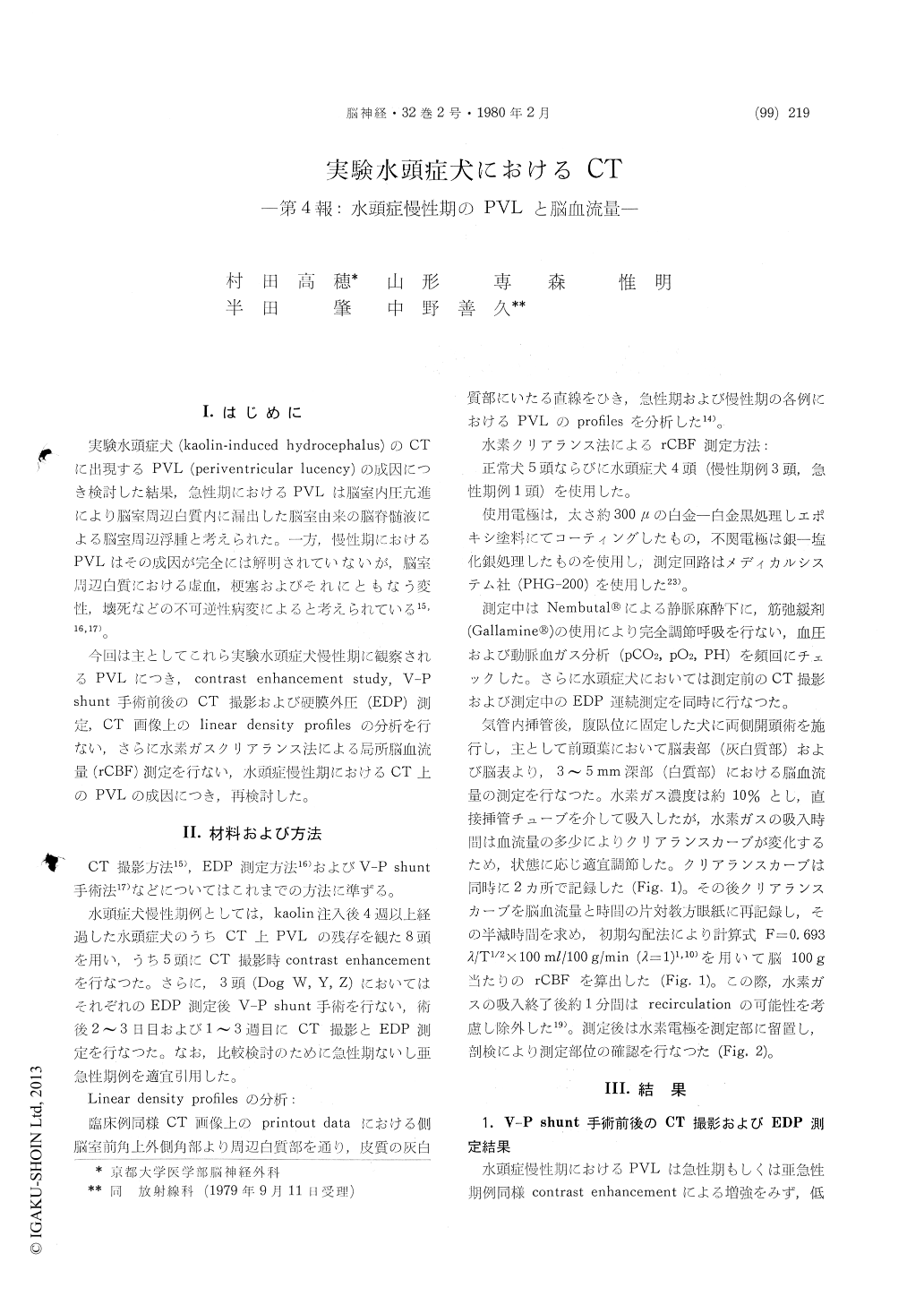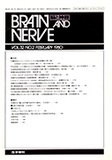Japanese
English
- 有料閲覧
- Abstract 文献概要
- 1ページ目 Look Inside
Ⅰ.はじめに
実験水頭症犬(kaolin-induced hydrocephalus)のCTに出現するPVL (periventricular lucency)の成因につき検討した結果,急性期におけるPVLは脳室内圧亢進により脳室周辺白質内に漏出した脳室由来の脳脊髄液による脳室周辺浮腫と考えられた。一方,慢性期におけるPVLはその成因が完全には解明されていないが,脳室周辺白質における虚血,梗塞およびそれにともなう変性,壊死などの不可逆性病変によると考えられている15,16,17)。
今回は主としてこれら実験水頭症犬慢性期に観察されるPVLにつき,contrast enhancement study,V-Pshunt手術前後のCT撮影および硬膜外圧(EDP)測定,CT上画像上のlinear density proflesの分析を行ない,さらに水素ガスクリアランス法による局所脳血流量(rCBF)測定を行ない,水頭症慢性期におけるCT上のPVLの成因につき,再検討した。
Observations of both CT scans and EDP moni-torings made before and after V-P shunting oper-ation, analysis of linear density profiles in PVL on experimental CT scans, and measurement of regional cerebral blood flow (rCBF) with a clearance method of hydrogen gas were performed to clarify the pathogenesis of PVL in the chronic stage of hydro-cephalus.
According to the results in our previous studies (part one to three), PVL in the chronic stage of hydrocephalus was considered to be an irreversible change such as cerebral infarction.
However, in the present study, PVL on CT scans disappeared two to three days after operation along with reduced ventricular size and decreased EDP, and reappeared by shunt malfunctions. Furthermore, in contrast enhancement study, PVL in the chronic stage was not enhanced. These results suggest that PVL in the chronic stage is considered to be an increase of water content in the periventricular white matters, rather than cere-bral infarction.
Analysis of linear density profiles in PVL were also investigated in experimental CT scans. Both in acute and chronic stages, these were mimicked to hydrocephalic patterns in the clinical cases. They had various upward slopes in densities without preservation of ventricular wall or parenchymal wall or parenchymal component recognized in PVL of the clinical cases with cerebral low perfusion syndrome.
The measurement of rCBF with a clearance method of hydrogen gas was performed chiefly in the chronic stage of hydrocephalus. It was noted that rCBF in the subcortical white matters near PVL were relatively preserved in comparison with marked decreased rCBF rate in the cortical grey matters. From these results, PVL in the chronic stage is never seemed to be a cerebral infarction due to loss of blood flow.
Consequently, PVL on CT scans in the chronic stage of canine hydrocephalus is pressumed chiefly to be a consequence of increase of water content in the white matter caused by preceding intra-ventricular hypertensions. In other words, PVL in the chronic stage is considered to be a sign on CT scan, which shows a preceding intraventricular hypertension.

Copyright © 1980, Igaku-Shoin Ltd. All rights reserved.


